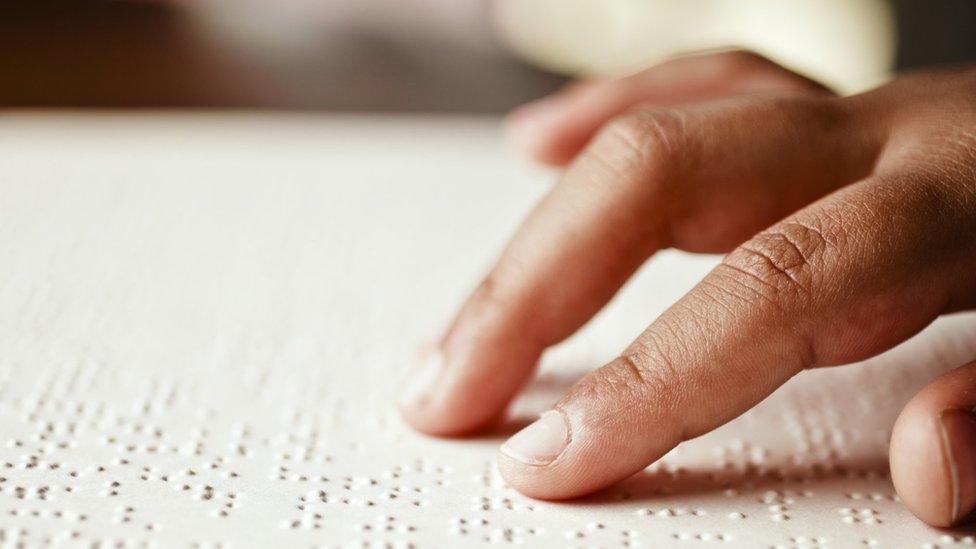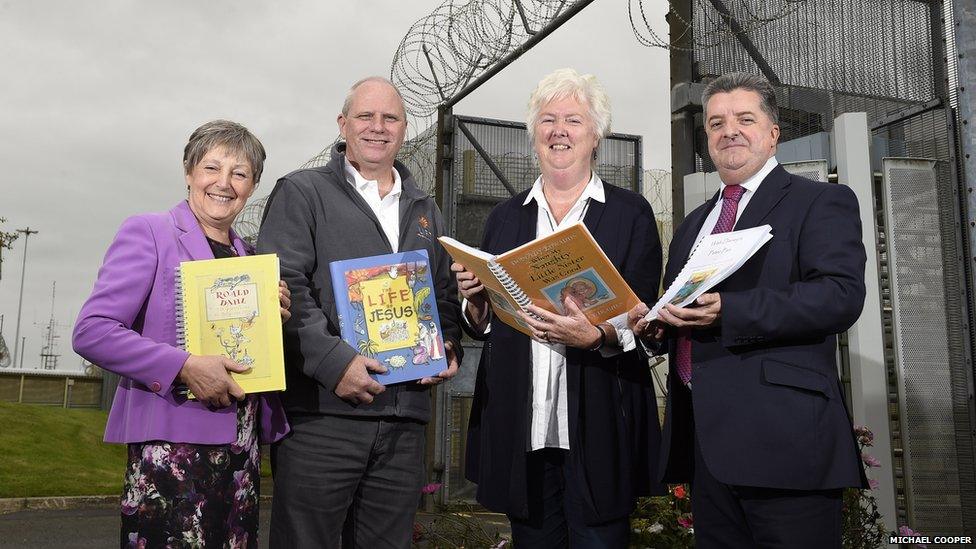Maghaberry prisoners make Braille books for African children
- Published

Inmates at a Northern Ireland prison have produced 60 Braille books for blind children in south-east Africa.
The consignment of books includes titles such as Peter Pan, the Jungle Book and Bambi, as well as Roald Dahl's The Giraffe, the Pelly and Me.
A dozen prisoners, mostly life-sentence inmates, have been working over a six-month period to produce the books.
The Braille workshop at Maghaberry Prison is the only one in Northern Ireland.
The books have been presented to three church charities for distribution in schools in Malawi, Tanzania and Kenya.

How does Braille work?
The tactile alphabet system was invented in 1821 by Louis Braille, who had been blind from the age of three.
Each character made of up to six dots, positioned in two columns of three.
It is read by passing fingers over each character, which represent letters of the alphabet and punctuation marks.
The key benefit is the ability to recognise each letter using a single finger tip, without need for repositioning.

The head of the Northern Ireland Prison Service, Ronnie Armour, said it was an excellent example of how prisoners can make a real difference to the lives of people through rehabilitation activities.
"These are some of the poorest countries in the world and poverty is an everyday reality," he said.
"I know the efforts of prisoners who have produced the books will be appreciated by the children and teachers who will use them."

Roberta Moore (Finvoy Presbyterian Church), Gary Moore (Labour in Faith and Trust) and Heather Clements (Limavady Presbyterian Church) receive the books from Ronnie Armour of the Prison Service
Maghaberry's Braille instructor, Mark Mooney, said the prisoners work extremely hard.
"It's very intricate work but all undertaken with great enthusiasm and dedication.
"It's an opportunity for the guys to give something back to society," he said.
- Published22 August 2017

- Published17 May 2017
